Master Saltwater Pool Maintenance: A Complete Guide
January 14th, 2025
January 14th, 2025
There's something almost magical about the gentle buoyancy and soft feel of salt water against your skin. As someone who has spent countless afternoons basking by my own saltwater pool, I can testify to the unique enjoyment it brings. Unlike traditional chlorine pools, saltwater pools offer a more natural swimming experience, with the added bonus of lower maintenance costs and a reduced chance of skin irritation. However, keeping that crystal-clear water in perfect condition requires a different approach—one that merges science with a touch of routine care.
When you first dip your toes into the realm of saltwater pool maintenance, the terminology might seem daunting. Terms like 'saltwater generator' or 'salinity levels' might feel as foreign as a new language. But fear not, it's more intuitive than it seems. The core principle revolves around maintaining the right balance of salt and ensuring your pool's components function smoothly. This involves regularly checking the salinity levels—ideally between 2,700 and 3,400 parts per million—and ensuring that your salt chlorinator is efficiently converting salt into chlorine.
Moreover, unlike their chlorine counterparts, saltwater pools are more forgiving when it comes to chemical balancing. Regular testing of the pH levels, alkalinity, and calcium hardness is still necessary, but you’ll find that the process becomes second nature over time. The key lies in understanding not just the 'how' but also the 'why' behind each step of maintenance. With this guide, you'll turn those seemingly complex tasks into simple, routine chores, ensuring your sanctuary remains a sparkling oasis all season long.
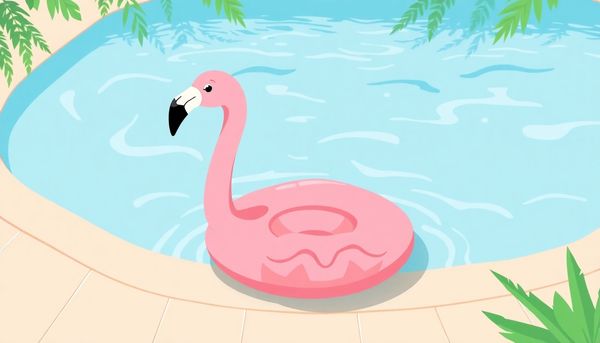
Maintaining the perfect balance in your saltwater pool chemistry is akin to a delicate dance, where each step ensures your aquatic oasis remains inviting and crystal clear. Unlike traditional pools, your saltwater system utilizes a generator to transform salt into chlorine, providing a gentler swim experience. However, this process can occasionally tip the scales of water chemistry, necessitating regular checks to keep things in harmony.
Begin with the pH level, which tends to drift upwards in saltwater pools due to the generation process. High pH levels can lead to scale formation and cloudy water. To keep it in check, aim for a pH between 7.4 and 7.6, and reduce it with a pH decreaser or muriatic acid when necessary. Regular testing is vital, and a habit of weekly checks can prevent minor issues from escalating.
Next, monitor your chlorine levels, aiming for 3 PPM of free chlorine to ensure effective sanitation. Your salt generator should maintain this balance, but it’s wise to cross-check with a test kit to confirm accuracy. Occasionally, you might need to manually boost chlorine, especially after a pool party or heavy rain.
Calcium hardness is another aspect to watch. Saltwater generators can contribute to calcium buildup, potentially damaging your equipment. Keep hardness levels between 200-400 PPM and clean your salt cell regularly to prevent scaling.
By staying vigilant and responsive, you can master the art of saltwater pool chemistry, ensuring a safer, more enjoyable swim season.
Salinity levels in a saltwater pool play a crucial role, acting as the backbone of your pool’s chlorine production. Unlike traditional pools where you manually add chlorine, a saltwater pool transforms salt into chlorine, ensuring your water remains fresh and clean. However, maintaining the correct salinity balance is key to this process. Regularly checking these levels is not just a routine task; it's a priority to ensure your pool's health.
A digital salinity tester or salt test strips provide an easy way to monitor salinity, with ideal levels ranging between 2,700 to 3,400 parts per million (PPM). Although most saltwater generators display salinity, manual testing prevents potential misreadings that could lead to pool issues. It's a bit like using a map and a compass when hiking; you want to ensure the path is right. Once, after a particularly stormy week, I checked my pool’s salinity only to find it had dipped below the necessary levels due to rainwater dilution. A quick addition of salt resolved the issue, demonstrating the importance of vigilance.
Beyond routine checks, environmental factors like heavy rainfall or water additions can alter salinity. Adjustments may be necessary during these times to maintain balance. When adding salt, start conservatively—it's far easier to add more later than to reduce excess. Regular monitoring not only prolongs your pool equipment's lifespan but also ensures a pleasant swimming experience free of algae and bacteria. Keeping a close eye on salinity safeguards your pool’s sparkling clarity and health throughout the season.
When it comes to maintaining a salt water pool, keeping a close eye on the pH and chlorine levels is paramount. Unlike traditional chlorine pools, a salt water pool utilizes a salt chlorine generator that transforms salt into chlorine, which can lead to naturally higher pH levels. This means regular monitoring is essential to avoid potential issues like calcium buildup and equipment corrosion.
Every week, take a few moments to test your pH and chlorine levels. A liquid test kit or test strips can help you ensure that your free chlorine levels stay around 3 parts per million (PPM). Although your salt chlorine generator should regulate this, it's wise to verify manually to catch any discrepancies early. If your chlorine levels stray from the ideal range, adjust your generator settings accordingly.
pH levels, on the other hand, can be a bit trickier in a salt water pool. The process of generating chlorine often results in elevated pH levels, which can climb above the recommended range of 7.2 to 7.6. High pH can cause unsightly scaling and skin irritation. To combat this, consider using a pH decreaser or muriatic acid to bring things back into balance.
Additionally, remember that the generator's run time influences pH. If pH consistently runs high, try limiting the generator to no more than 10 hours a day. Balancing pH and chlorine may seem daunting, but regular testing and adjustments will keep your salt water pool sparkling and swim-ready.
Swirling tranquil waters call to mind lazy summer afternoons, yet beneath the allure of your saltwater pool lies a hidden nemesis—calcium build-up. This stealthy adversary can lead to unsightly scaling and even damage your pool equipment if left unchecked. How, then, does one keep this calcium monster at bay?
Start by recognizing that calcium build-up is often a byproduct of high pH levels and temperature in saltwater pools. Regularly testing and adjusting your pool's pH is crucial. Aim for a pH between 7.2 and 7.6 to prevent calcium from precipitating. A friend of mine, a seasoned pool owner, swears by using a reliable pH tester weekly, often catching imbalances before they escalate.
Moreover, your salt cell is a prime target for calcium deposits. Inspect it every three months to ensure it remains free of scale. Cleaning methods vary, but a gentle rinse with a hose often suffices. For stubborn deposits, a diluted muriatic acid bath can work wonders, though be cautious—frequent chemical cleaning can wear down the cell over time.
Finally, consider your water’s calcium hardness levels. Maintaining these between 200-400 ppm helps in reducing tendencies for calcium scaling. An acquaintance once found this out the hard way after neglecting her water's hardness, leading to a costly equipment replacement.
With these steps, your pool can remain a shimmering, inviting haven, with calcium relegated to a mere footnote in your maintenance journey.

Balancing the pH in your saltwater pool might seem like a minor task, but it’s critical for maintaining a safe and comfortable swimming environment. Unlike traditional chlorine pools, saltwater systems often run with higher pH levels due to the byproducts of the chlorine generation process. This can lead to several issues if left unchecked, such as irritating skin and eyes, scaling on your pool surfaces, and even potential damage to your equipment.
Saltwater pools naturally produce a higher pH, which means regular testing is essential. Aiming for a pH level between 7.2 and 7.6 will strike the ideal balance. Anything higher could invite trouble. My neighbor learned this the hard way when her pool equipment corroded faster than expected, all because the pH was allowed to climb too high. To avoid such mishaps, consider using a reliable liquid test kit or digital pH meter weekly.
If adjustments are needed, a pH decreaser or muriatic acid will do the trick. Remember, small tweaks are best; overcorrecting can create more problems. Celebrating a well-maintained pH ensures your pool remains an oasis rather than a battleground against algae and discomfort. Personal experience has taught me that a proactive approach saves both time and headaches. By regularly monitoring and adjusting your pH levels, you’ll keep your pool sparkling and swimmer-friendly throughout the season.
#

Understanding the nuances of water chemistry is crucial for those who cherish the luxurious feel of a saltwater pool. Saltwater systems transform ordinary salt into chlorine, but this doesn’t eliminate the necessity for regular chemical balance checks. A friend of mine once ignored this advice, resulting in cloudy water that was anything but inviting.
High pH levels often become an uninvited guest in saltwater pools. This occurs due to the byproducts of the salt conversion process. Regularly testing pH levels prevents unwanted scaling and corrosion, ensuring pool surfaces and equipment remain in top condition. Using a reliable pH test kit, check weekly and adjust with a pH decreaser as needed. My weekly routine involves a quick dip of the test strip, always followed by a sense of relief when everything reads just right.
Calcium build-up is another villain that can lurk in the shadows of your pool maintenance regime. Salt chlorinators are notorious for accumulating calcium deposits, particularly on the salt cell. Inspecting and cleaning this component every few months helps maintain the pool’s clarity and efficiency. I've found that a simple rinse with a hose often does the trick, though occasionally, a diluted muriatic acid solution is necessary to tackle more stubborn build-ups.
Your pool's clarity and health rely on consistent monitoring. By balancing chemistry regularly, you ensure your pool remains a sparkling oasis, not just a body of water. Trust me, it’s a habit that pays off with every swim.
Imagine a sparkling oasis where the water glistens like diamonds under the sun, inviting swimmers to dive in. Yet, beneath this inviting surface, a sneaky culprit lurks — calcium build-up. In salt water pools, this pesky intruder can manifest in white flakes floating around or as stubborn white deposits on your salt cell, threatening the longevity of your pool equipment. The key to preventing these unwanted guests is vigilance and regular maintenance.
Begin by understanding that salt water generators tend to increase your pool's pH levels, which can lead to calcium scaling. To combat this, testing and adjusting your pH levels weekly is a must. Aim for a pH between 7.2 and 7.6 to keep scaling at bay. If your pH levels are consistently high, consider using a pH decreaser or a splash of muriatic acid to bring them down.
In addition to pH management, routine inspection becomes your ally. Every three months, disassemble and inspect your salt cell for any signs of calcium deposits. These can usually be rinsed off with a garden hose, but for more stubborn build-ups, a diluted solution of 5:1 water to muriatic acid may be necessary. Always handle chemicals with care, wearing protective equipment.
Remember, prevention is simpler than rectification. By maintaining balanced water chemistry and routinely checking the salt cell, you can keep calcium build-up under control, ensuring your pool remains an inviting retreat for seasons to come.
Salinity plays a pivotal role in maintaining the health and efficiency of a salt water pool. One wouldn't want to underestimate the significance of this seemingly minute detail. Ensuring the right salt level not only helps the salt chlorine generator function optimally but also balances the overall chemistry of the pool, making the water safe and pleasant for swimmers.
Once the pool is filled, the initial step is to measure the salinity with a digital salinity tester. This tool is incredibly reliable, providing precise readings that guide your next actions. If your salinity falls below the ideal range of 2,700 to 3,400 parts per million (PPM), it’s time to add salt. Pool-grade salt, with its 99% purity, effectively meets this need. Sprinkle the salt across the deep end of the pool and use a brush to aid its dissolution. Circulate the water continuously for 24 hours to ensure even distribution.
Conversely, if the salinity is too high, dilution becomes essential. Draining a portion of the pool and replenishing it with fresh water lowers the salt concentration. It’s crucial to retest after any adjustment to confirm that levels are back within the desired range. A keen eye on the salinity ensures that any fluctuations caused by variables like rainfall or splash-out are swiftly managed, preventing corrosion or equipment malfunction. Regular checks, therefore, are your best ally in maintaining a salt water pool that is both inviting and well-balanced.
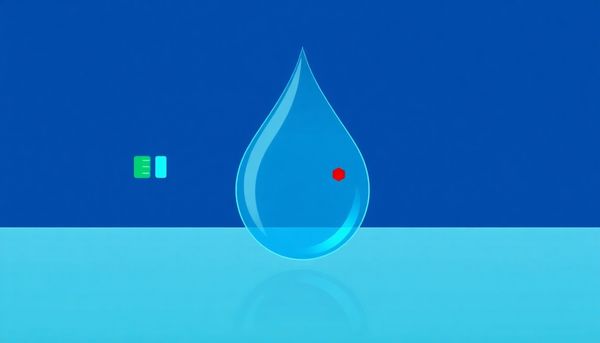
Regularly keeping an eye on salt levels in your pool is akin to checking the pulse of its health. Salt water pools, while easier to maintain in many ways, require certain vigilance to remain in optimal condition. Unlike traditional chlorine pools, the generator should automatically handle chlorine production, but the process hinges on the salt’s precise concentration. This is where regular testing becomes invaluable.
I recall a friend who, after a particularly rainy week, noticed a drop in the pool's chlorine effectiveness. The culprit? Diluted salt levels. Such variations in salinity might not always be visibly evident but can lead to inefficient chlorine production. Therefore, it’s crucial to get into the habit of testing your pool's salinity every month, or after heavy rainfalls and significant water changes. A digital salinity tester can be your best friend here, offering precise readings that ensure your generator functions efficiently.
Beyond salinity, the interconnected balance of other chemicals—such as calcium, alkalinity, and stabilizers—requires attention. A well-rounded testing regime not only reveals the current state but also preemptively addresses potential issues, saving time and resources down the line. By weaving this practice into your regular pool maintenance routine, you can enjoy clearer waters and fewer surprises, much like my friend who now swears by her monthly salinity checks.
Maintaining the perfect balance of salt in your pool is like keeping a secret recipe just right. While adding salt may not be a frequent task, overlooking consistency can invite unforeseen troubles. Think of your pool as a living, breathing entity, constantly affected by the environment—rain dilutes it, evaporation can concentrate it, and splash-outs redistribute it. It’s imperative to maintain the salinity within the sweet spot of 2,700 to 3,400 parts per million (PPM).
I remember a friend who neglected this step during the sweltering summer months. The salt level crept up unnoticed due to evaporation, leading to equipment corrosion and irritated eyes for swimmers. Such mishaps underscore the importance of regular checks. Using a digital salinity tester or reliable salt test strips once a month is indispensable. They’re like the thermometer for your pool’s health, providing a quick and precise measure of salinity.
When your readings suggest an imbalance, take action promptly. Adding fresh water can dilute excessive salt, while a few more bags can restore depleted levels. It’s less about drastic adjustments and more about fine-tuning. Picture a well-tuned instrument; your pool should harmonize with its chlorine generator and remain inviting for a refreshing dip. Consistent monitoring ensures your pool remains a haven, not a headache, throughout the swimming season.
Maintaining the delicate equilibrium of pH and calcium levels in a salt water pool can feel akin to a culinary endeavor; you can’t just throw in ingredients and hope for the best. Perfecting this balance is vital, not merely for the comfort of your swimmers, but for the longevity of your pool infrastructure. High pH levels, often a side effect of the salt water generator, can lead to eye irritation and unsightly scaling on pool surfaces. It's essential to regularly test these levels — ideally each week — using a reliable test kit or strips.
Once, a friend of mine learned the hard way about neglecting pH balance. After a week away, his backyard oasis turned into a chemistry experiment gone wrong, with cloudy water and crusty scale along the tile line. Tackling this issue required not only a pH decreaser but also a vigilant eye on calcium hardness. Calcium levels, while necessary to prevent corrosion, can quickly rise and cause buildup within the generator, often mistaken as salt residue.
To combat calcium deposits, a gentle approach is key. Use a diluted muriatic acid solution sparingly, and avoid harsh scrubbing which could damage sensitive equipment. Regular inspection and cleaning of your salt cell every three months will fend off stubborn deposits. Remember, the better balanced your pool chemistry, the more enjoyable and low-maintenance your swimming experience will be.
Keeping a saltwater pool running smoothly is much like fine-tuning an orchestra, with the salt cell and generator playing the lead roles. These components transform ordinary salt into chlorine, maintaining clear and sanitized water. Regular maintenance of these parts ensures your pool stays in harmony. The salt cell, the heart of your system, requires a watchful eye for calcium buildup. Over time, this buildup can resemble white, flaky deposits that can obstruct efficient function. I once noticed a drop in my pool's chlorine levels and on inspection, found these pesky scales clogging my salt cell. A simple quarterly check can prevent such surprises.
Disconnect the generator and visually inspect the cell every three months. If you spot any deposits, rinse them off with a garden hose. For stubborn spots, a gentle brushing might help, but avoid forceful scrubbing. Occasionally, a diluted muriatic acid solution can be used for deeper cleaning—just remember to follow safety precautions and manufacturer instructions. Once, when my own salt cell demanded a deeper clean, I carefully mixed a 5:1 water-to-acid solution and let it work its magic for a few minutes. The result was a gleaming, scale-free cell ready to keep my pool pristine.
Never underestimate the power of consistent checks. They ensure that your salt cell and generator function at their best, keeping your water both inviting and safe. It's a small routine that promises big rewards for any saltwater pool owner.
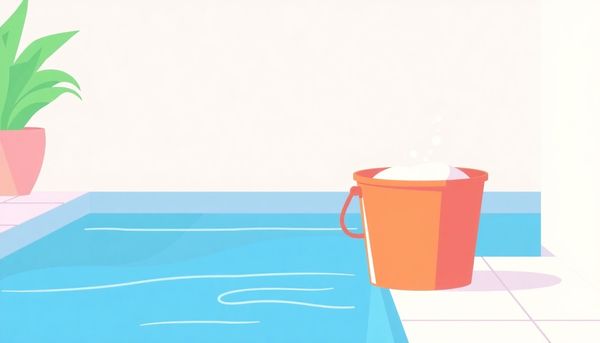
Keeping a pool in pristine condition often feels like an art, especially when it comes to the intricacies of a saltwater system. Among the many tasks on your maintenance checklist, giving attention to your salt cell might be the most crucial. Neglecting this component can quickly lead to unwanted surprises.
Think of the salt cell as the heart of your saltwater pool's operation, converting salt into the chlorine necessary for clean, safe swimming water. Over time, this vital component can fall victim to calcium buildup. High pH levels and warm pool temperatures only speed up this process. Three-month check-ups are a must—consider setting a reminder on your phone to give it a look at the start of each season.
During inspections, turn off your pool system and carefully remove the salt cell. You'll want to peer inside for any signs of white, flaky deposits. Should you spot these, a simple rinse with a hose might suffice. For stubborn buildup, a diluted mixture of water and muriatic acid often does the trick. Remember to always wear protective gear when handling chemicals, and avoid frequent chemical cleanings to prolong your cell’s life.
By making this routine a habit, you’ll ensure your saltwater pool system remains efficient and reliable, saving you headaches down the line. After all, a well-maintained salt cell means a crystal-clear pool and many more carefree days of swimming.
For the salt water pool enthusiast, keeping the salt cell in pristine condition is akin to a chef maintaining the sharpness of their favorite knife. The salt cell, the heart of your saltwater generator, quietly transforms salt into chlorine, keeping your pool sparkling clean. However, this crucial component does require regular attention to ensure it operates efficiently. Think of it as a routine health check-up for your pool system.
Every three months, it’s wise to closely examine the salt cell for any signs of calcium buildup—a common nemesis in salt water systems. Over time, these deposits can form a stubborn layer on the cell’s metal plates, reducing its effectiveness. If left unchecked, this can lead to lower chlorine production and murky water. When inspecting, look for white, flaky deposits clinging to the metal. If they’re present, your salt cell needs a good cleaning.
Gently remove the cell and wash away deposits using a hose. For more stubborn residues, a diluted muriatic acid solution can be your ally. Remember to wear protective gear and adhere strictly to safety instructions—always add acid to water, not the reverse. Allow the solution to foam away any lingering deposits for about ten minutes. Afterward, rinse thoroughly before reassembling the system. While chemicals play a role in cleaning, use them sparingly to prolong the cell’s life.
By regularly inspecting and cleaning the salt cell, you ensure a seamless chlorine production process, keeping your pool a serene oasis.
Balancing and testing water chemistry in a saltwater pool isn't just a routine task; it's the heart of maintaining that perfect swimming experience. Unlike traditional pools, where adding chlorine is a regular chore, saltwater pools rely on a generator transforming salt into chlorine. This magical process requires a keen eye on several other chemical levels to ensure everything runs as smoothly as a freshly mopped kitchen floor.
First, let's talk pH levels. In saltwater pools, pH tends to drift upwards due to the chlorine generation process. Keeping that pH around 7.4 to 7.6 is not just a number game; it's crucial for avoiding skin irritation and equipment scaling. Regular testing with reliable test strips or kits helps catch any deviations early. From personal trials, I’ve found that adding muriatic acid or a pH decreaser works wonders to bring those numbers back in line.
Next, there's the matter of total alkalinity and calcium hardness, which are like the silent sentinels of your pool water. Alkalinity acts as a buffer for pH, and it's best kept between 80 and 120 ppm. Meanwhile, calcium hardness, ideally between 200 and 400 ppm, prevents corrosion and scaling. Too high or too low, and you may start seeing more than just ripples on the surface. Weekly checks and adjustments ensure your pool’s health and longevity.
Lastly, don't overlook your chlorine levels. While your generator does most of the heavy lifting, it’s wise to manually check chlorine levels regularly to confirm your system’s accuracy. Keeping chlorine around 3 ppm maintains that crystal-clear look we all dream of. Embrace this routine, and your saltwater pool will reward you with endless summer afternoons of carefree splashing.
Balancing salinity levels in a saltwater pool is akin to orchestrating a symphony. Each element must harmonize to create a safe and inviting swimming environment. In managing salinity, the first move is understanding that the salt in your pool doesn't simply vanish into thin air; it dissipates primarily due to water loss from splashing, evaporation, or intentional draining. Therefore, periodically checking these levels becomes essential.
For instance, if you've just experienced a heavy rainstorm or decided to add fresh water, it's a good idea to measure the salinity level. Using a digital salinity tester, you can easily determine if your pool is within the ideal range of 2,700 to 3,400 parts per million (PPM). Knowing that 3,200 PPM is the sweet spot for most pools will guide you in maintaining optimal conditions.
Once, after a particularly blustery week, I noticed my pool's performance had dipped. A quick test revealed the salinity was off, a result of too much rainwater. After some calculations, I added the necessary amount of pool-grade salt, and the clarity returned almost magically overnight.
To prevent uneven salinity distribution, constant water circulation is crucial. Keeping your filter and pump running for about eight hours daily ensures the salt is evenly mixed, eliminating dead zones where salt might concentrate. Should you discover fluctuations in testing around the pool, a gentle adjustment of the return jets can aid in evening things out. In essence, consistent monitoring and minor tweaks can keep your pool chemistry in perfect balance.
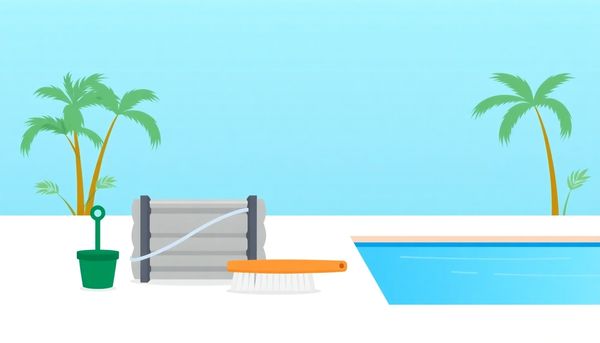
When it comes to caring for a salt water pool, the unsung hero often lurking behind the scenes is your pool equipment. This gear works tirelessly to keep your oasis sparkling, but without regular inspections, it could falter, leading to unwanted surprises. First on the agenda is the salt chlorine generator, which transforms simple salt into the chlorine your pool needs. This element is the workhorse of the system and must be checked every few months for calcium buildup, as these deposits can hinder its functionality. A simple visual inspection can reveal white, flaky deposits, signaling it's time for a cleanup.
Next, consider your pool pump and filter system. These components are vital for keeping your water circulating, ensuring that salt and chemicals are evenly distributed. Imagine the pump as the heart of your pool, pushing water through the filtration system to remove debris and contaminants. Regularly examine your pump for leaks or unusual noises, which could indicate a looming issue. A malfunctioning pump can lead to stagnant water and uneven salt distribution, creating pockets of undissolved salt that can corrode equipment or cause discomfort for swimmers.
Don't overlook the smaller components, like skimmer baskets and return jets. A clogged skimmer can minimize circulation efficiency, while misaligned return jets might fail to break up salt clusters. Make it a habit to clear debris from the skimmer and adjust return jets to ensure an even flow.
By giving your pool equipment the attention it deserves, you'll not only extend its lifespan but also enjoy a consistently clean and inviting pool. Remember, a little preventive maintenance goes a long way in preserving the magic of your salt water sanctuary.
Balancing the water chemistry in a saltwater pool is akin to fine-tuning a symphony where every instrument must hit the right note. Unlike traditional chlorine pools, where you manually add chlorine, your saltwater pool relies on a salt chlorine generator to convert salt into chlorine. This means that while the presence of chlorine is automatic, getting other elements in harmony requires a bit more attention.
Start by keeping an eye on the pH level, which tends to drift higher in saltwater systems. High pH can lead to scaling and cloudy water, not to mention irritation for swimmers. Regularly test the pH and aim to keep it within the 7.2 to 7.6 range. When it climbs too high, a dose of muriatic acid or a pH decreaser will bring it back in line.
Calcium buildup is another contender in this balancing act. The salt cell, where the magic of salt-to-chlorine conversion happens, can accumulate calcium deposits, making frequent inspections necessary. Cleaning the cell every three months using a diluted acid solution—carefully, of course—can prevent any significant buildup that might impair performance.
Alkalinity and stabilizer levels also require monthly checks. The alkalinity should sit between 80 to 120 ppm, providing a buffer that helps maintain stable pH levels. Meanwhile, cyanuric acid, the stabilizer, protects chlorine from being devoured by the sun’s rays, ideally hovering between 30 to 50 ppm.
Balancing the chemistry in your saltwater pool is not just a maintenance task; it’s a proactive approach to ensuring your pool remains inviting and comfortable all season long.
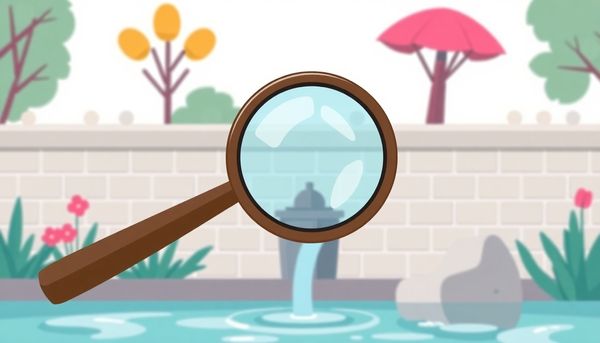
This article provided insights into maintaining your pool. Start your pool care journey today!
Want to become a pool maintenance expert? Our free Pool School course covers everything you need to know about pool care. From basic maintenance to advanced troubleshooting, you'll learn how to:
Join over 10,000 pool owners who have already transformed their pool care routine. Get started with our free Pool School course today!